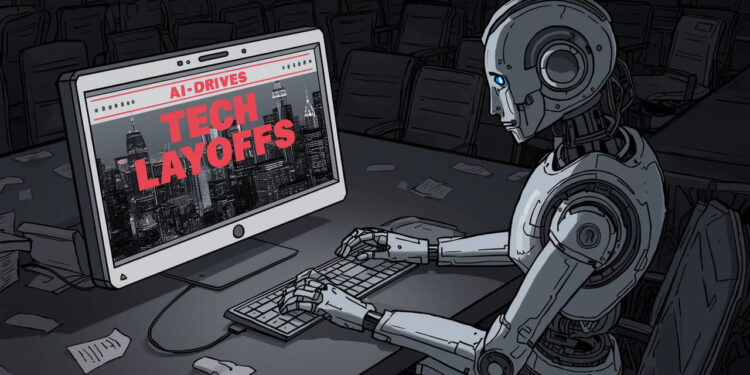The global technology industry is experiencing one of the most significant workforce disruptions in modern history, with more than 112,000 tech workers laid off across about 200 companies in 2025 alone. A wave of layoffs, driven by the adoption of artificial intelligence, automation, and economic factors, has resonated across every corridor of the tech industry, from Silicon Valley to Bengaluru and beyond.
The Scale and Scope of the Layoffs
According to data collected by Layoffs. Fyi, a comprehensive tracker of job cuts globally shows that 218 tech companies announced significant layoffs in 2022, totaling about 112,732 job losses. Amazon, Intel, Tata Consultancy Services, Microsoft, and Meta are the most influential players in the history of these cuts. Corporate positions have been cut, but so have manufacturing and versus IT services.
Amazon alone is eliminating about 14,000 corporate roles, or almost 3.9 percent of its corporate team, by dissolving functions such as cloud computing (AWS), HR, operations, and devices. Intel is said to be cutting 24,000 jobs, or 21.8 percent of its headcount, as part of a restructuring to reposition the firm amid intense competition from Nvidia and AMD. Roughly 20,000 people lost their jobs at TCS in the quarter ending September 2025; the majority of these cuts occurred among mid- to senior-level employees. Microsoft and Meta, which are reducing headcount in high-stakes businesses because of the shifting nature of work in an AI-driven age, are other prominent examples.
Why Are These Layoffs Happening?
On the one hand, executives and industry leaders claim that such enormous layoffs are the result of the profound changes that AI brings to how companies produce and develop market technologies. The automation and computerization of more and more processes eliminate the need for many jobs and professions. In turn, the pace of such a shift forces corporations to adapt by cutting an enormous number of existing jobs to fit into a rapidly changing, well-automatized field.
Andy Jassy, the Amazon CEO, insists that their cuts are part of a broader ambition “to run Amazon like the world’s largest startup” and is meant to direct investments away from abundant capital to the more “undercapitalized” engineering functions that feed AI innovation. The job losses at Intel can be interpreted similarly: the company is attempting to revitalize itself amid a chip industry transformation toward AI-driven designs, and reducing headcount is part of the process. Indeed, many experts believe AI will ultimately create more jobs and efficiencies, but the transition will cause significant churn, and many people will have to move funds.
Impact on the Workforce and Economy
The layoffs have affected workers at all levels, from entry-level to senior management, but especially in IT services, cloud infrastructure, consulting, and manufacturing. The tech industry is making the most cuts, but other sectors undergoing AI-driven change are also seeing similar trends.
Companies are spending billions on severance packages even as they lay off workers, underscoring the scale of the restructuring. Experts in the field say the wave of layoffs related to AI could continue as companies spend heavily on generative AI tools and cloud platforms while cutting back on traditional jobs.
Experts, including economists at Goldman Sachs, expect AI adoption to lead to temporary job losses. Still, they also believe that once AI is fully integrated, it will increase productivity by up to 15% in the US and other developed markets, creating new jobs over time.
Looking Ahead
AI-driven layoffs are a big problem, but they show that technology is changing jobs rather than just eliminating them. Workers are under pressure to learn new skills and take on jobs involving cloud computing, AI development, and analytics.
For many people in tech, 2025 will be a critical year. Companies are quickly moving toward an AI-first future, cutting jobs while also investing in new ideas. This change shows how important it is for workers to keep learning and be flexible to thrive in a world where technology is changing rapidly.


